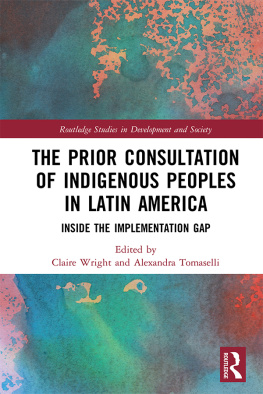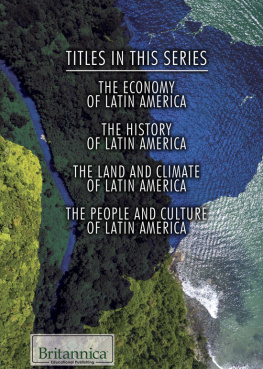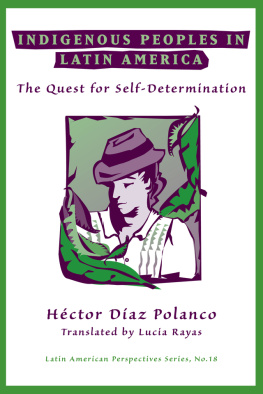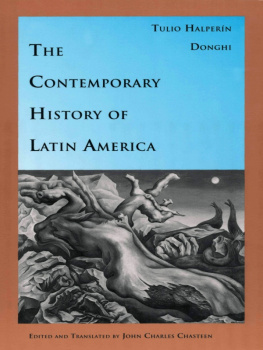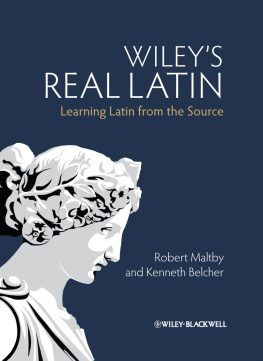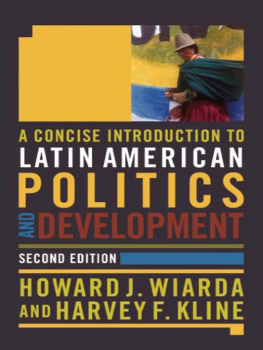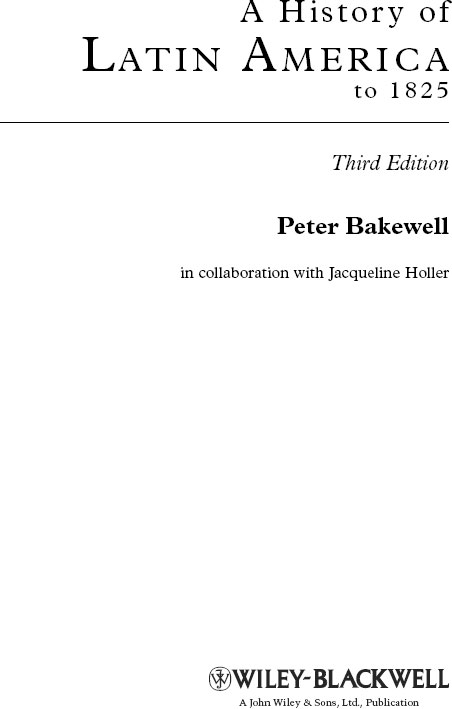THE BLACKWELL HISTORY OF THE WORLD
General Editor: R.I. Moore
*The Origins of Human Society
Peter Bogucki
*A History of India
Burton Stein
A History of South-East Asia
Anthony Reid
A History of China
Morris Rossabi
*A History of Japan
Conrad Totman
*A History of Australia, New Zealand and the Pacific
Donald Denoon, Philippa Mein-Smith & Marivic Wyndham
A History of the Eastern Mediterranean
Nicholas Doumanis
The Western Mediterranean and the World
Teofilo F Ruiz
A History of Western Europe
Robin Briggs
A History of Central and Northern Europe
Robert Frost
*A History of Russia, Central Asia and Mongolia: Volume I
David Christian
A History of Russia, Central Asia and Mongolia: Volume II
David Christian
A History of the Ancient Americas
Fred Spier
*A History of Latin America
Third edition: A History of Latin America to 1825
Peter Bakewell
Foundations of the Modern World
R.I. Moore
The Early Modern World
Sanjay Subrahmanyam
*The Birth of the Modern World
C. A. Bayly
The Crisis of the Modern World
C. A. Bayly
* Denotes title published
This Third edition first published 2010
2010 Peter Bakewell and Jacqueline Holler
Edition history: A History of Latin American; c.1450 to the Present, 2nd edition; Peter Bakewell; June 2003; Wiley-Blackwell A History of Latin America; Peter Bakewell; July 1997; Wiley-Blackwell
Blackwell Publishing was acquired by John Wiley & Sons in February 2007. Blackwells publishing program has been merged with Wileys global Scientific, Technical, and Medical business to form Wiley-Blackwell.
Registered Office
John Wiley & Sons Ltd, The Atrium, Southern Gate, Chichester, West Sussex, PO19 8SQ, United Kingdom
Editorial Offices
350 Main Street, Malden, MA 02148-5020, USA 9600 Garsington Road, Oxford, OX4 2DQ, UK The Atrium, Southern Gate, Chichester, West Sussex, PO19 8SQ, UK
For details of our global editorial offices, for customer services, and for information about how to apply for permission to reuse the copyright material in this book please see our website at www.wiley.com/wiley-blackwell.
The right of Peter Bakewell and Jacqueline Holler to be identified as the author of this work has been asserted in accordance with the Copyright, Designs and Patents Act 1988.
All rights reserved. No part of this publication may be reproduced, stored in a retrieval system, or transmitted, in any form or by any means, electronic, mechanical, photocopying, recording or otherwise, except as permitted by the UK Copyright, Designs and Patents Act 1988, without the prior permission of the publisher.
Wiley also publishes its books in a variety of electronic formats. Some content that appears in print may not be available in electronic books.
Designations used by companies to distinguish their products are often claimed as trademarks. All brand names and product names used in this book are trade names, service marks, trademarks or registered trademarks of their respective owners. The publisher is not associated with any product or vendor mentioned in this book. This publication is designed to provide accurate and authoritative information in regard to the subject matter covered. It is sold on the understanding that the publisher is not engaged in rendering professional services. If professional advice or other expert assistance is required, the services of a competent professional should be sought.
Library of Congress Cataloging-in-Publication Data
Bakewell, P. J. (Peter John), 1943
A history of Latin America to 1825 / by Peter Bakewell ; in collaboration with Jacqueline Holler. 3rd ed.
p. cm. (The Blackwell history of the world)
Previous ed.: A history of Latin America: c. 1450 to the present. 2004.
Includes bibliographical references and index.
ISBN 978-1-4051-8368-0 (pbk.: alk. paper) 1. Latin AmericaHistory. I. Holler, Jacqueline Zuzann, 1964 II. Bakewell, P. J. (Peter John), 1943 History of Latin America. III. Title.
F1410.B175 2010
980dc22
2009037492
A catalogue record for this book is available from the British Library.
ABOUT THE COVER IMAGE
WE see here what was undoubtedly the most famous hill anywhere in the Spanish empire: the Cerro Rico, or Rich Hill, of Potos high up in the eastern Andes of what is now Bolivia. The source of the Cerros fame, and also of the envy that it inspired in Spains enemies, was the enormous amount of silver ore that it contained. Between 1545, when Spaniards first found ores here, and the 1650s, about half of the immense amount of silver that Spanish America produced came from Potos. Many mine openings can be seen below the peak of the Cerro. Herds of llamas carry ore down to refineries where the silver is extracted. By the late 1500s (probably the time of this picture) Potos had almost a hundred refineries. It was an industrial city. A typical refinery is in the foreground. Ore is finely crushed by a stamp-mill, and is then combined with mercury in the tanks at the bottom left. The silver in the resulting silvermercury amalgam can then be isolated by heating, which removes the mercury by evaporation. The refinery is operated by skilled native workers, probably wage laborers. Forced native workers did most of the actual mining.
For Max and Nicholas
par nobile fratrum
LIST OF ILLUSTRATIONS
| The Bolivian altiplano (c. 4,000 meters) near La Paz, looking east to the peaks of the Cordillera Real of the Andes |
| An Andean volcano: Misti (c. 5,800 meters) in southern Peru, with the town of Arequipa in the foreground |
| The Cerro Rico (Rich Hill) of Potos (Bolivia), seen from a square in an Indian quarter of the town |
| Sucre, capital of Bolivia until the end of the nineteenth century, and before that, as La Plata, seat of the Audiencia of Charcas |
| An Andean hacienda: Cayara, in a high valley near Potos (Bolivia) |
| Interior ranges of the Sierra Madre Occidental, Mexico: the valley of the Bolaos river (state of Jalisco) |
| The volcano Popocatpetl seen from the roofs of Puebla, in central Mexico |
| Seated hunchback holding a mirror, a ceramic figurine from Las Bocas (Puebla, Mexico) in the Olmec style dating from 1000 to 500 BC |
| Maya eccentric flint, probably from the Late Classic period (eighth and ninth centuries AD) and the Petn (northern Guatemala or southern Belize) |
| Aztec rattlesnake, carved from basalt, with day-signs incised into it |
| Impersonator of Xipe Totec, our lord with the flayed skin, a powerful Aztec fertility god |
| Ceramic stirrup-spout vessel with a scroll ornament, from the north coast of Peru, but in the Chavn style |
| Part of the lower wall of Sacsahuaman, just outside Cuzco in Peru |
| Quipu: an example of the device made of knotted, colored strings used in the Andes to record information |
| The Annunciation, by Cristbal de Villalpando (Mexico, c. 16501714) |
| Archangel with a Matchlock Gun, Salamiel Paxdei |



